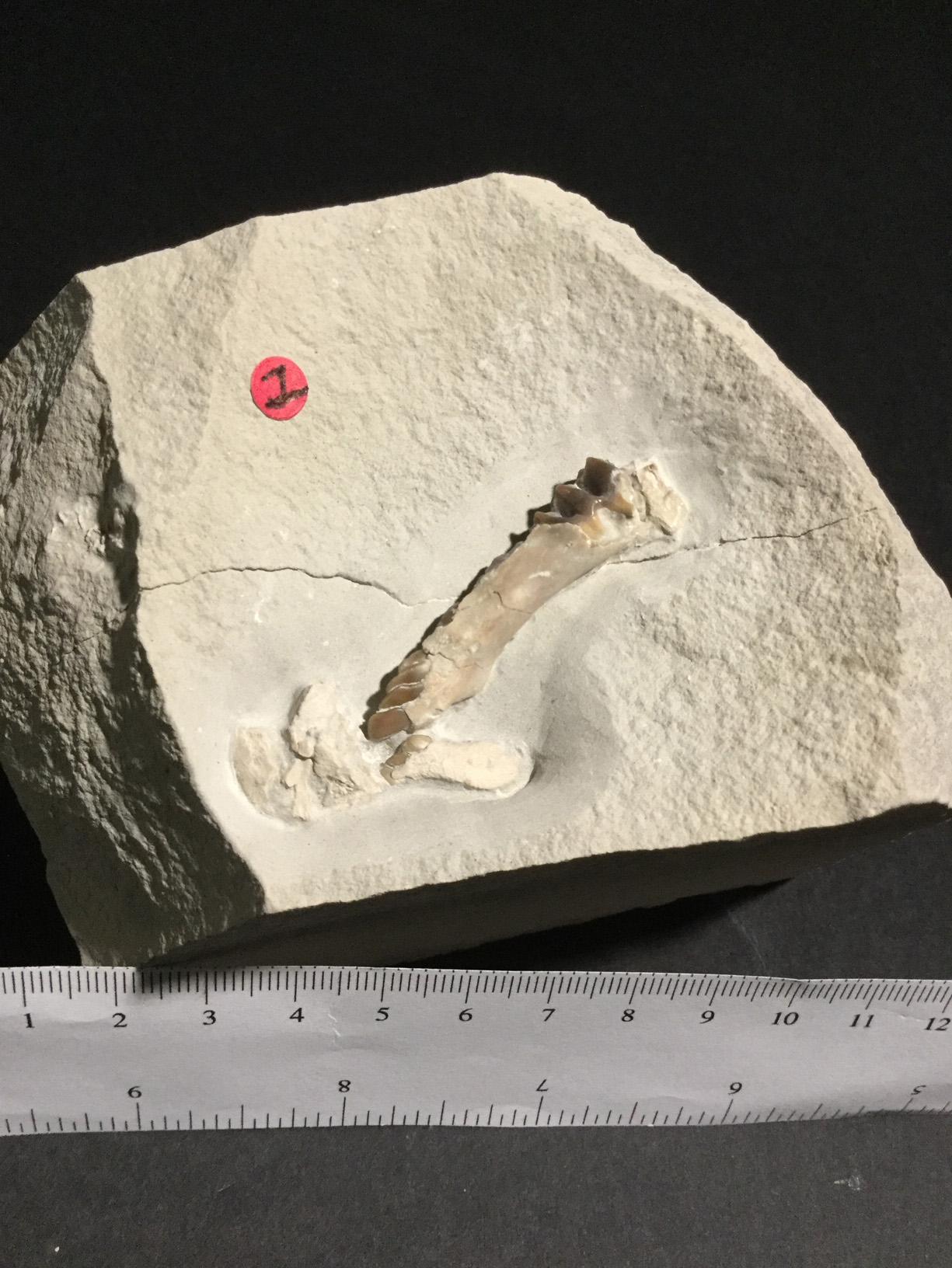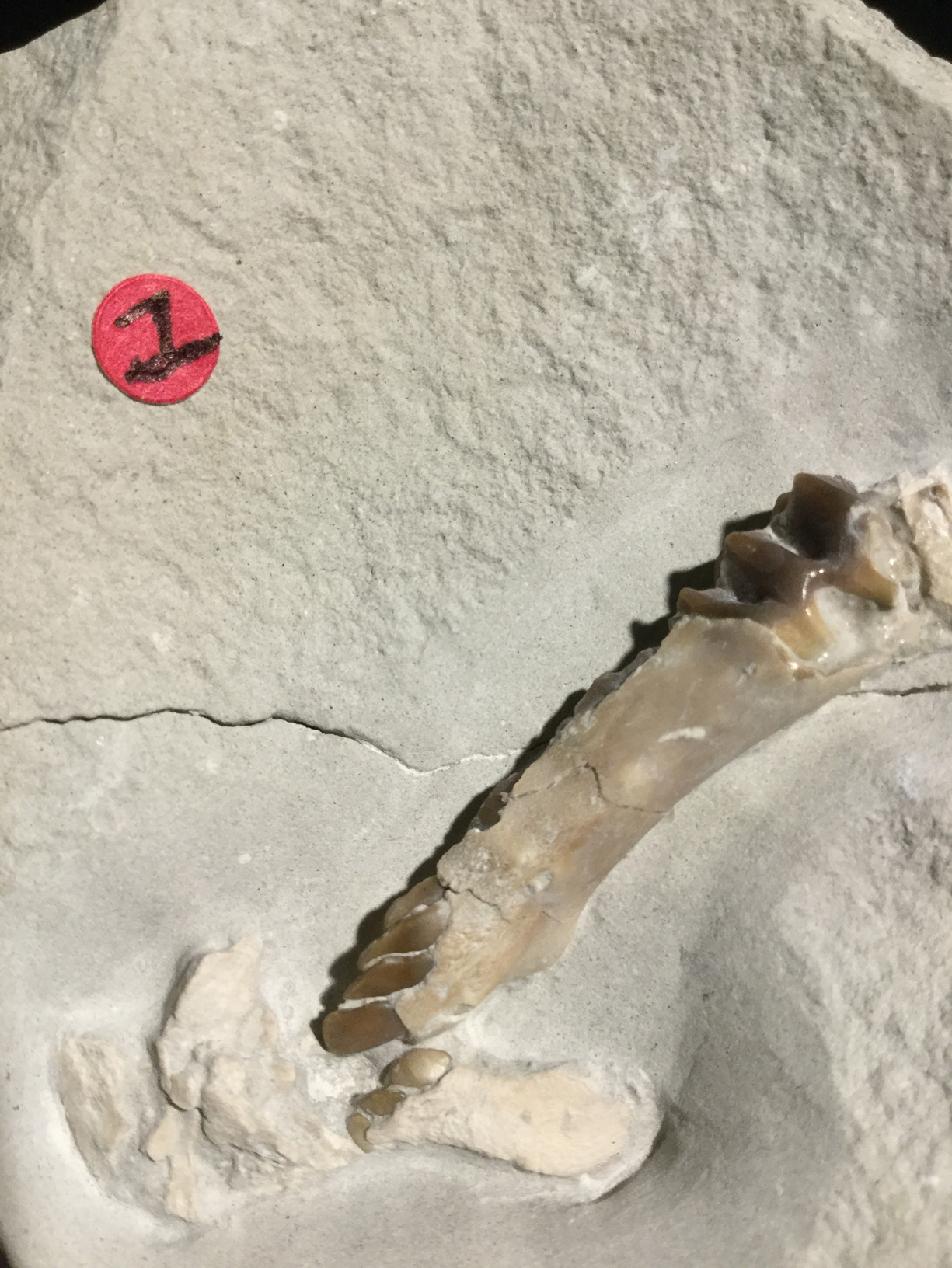
Oligocene Baby Camel Jaw
Sorry, this item is no longer for sale
Poebrotherium wilsoni
Brule Formation
Middle Oligocene
Converse County, Wyoming
Brule Formation
Middle Oligocene
Converse County, Wyoming
This example of the fossil camel Poebrotherium is a lower jaw section of a baby. The tiny jaw shows a newly erupting deciduous molar and incisors. The jaw section is 4.5 cm. It is prepared in its original matrix and has no repair or restoration.
Modern members of the family Camelidae are found in the Old World and South America however, the fossil record shows that the family originated in North America in the Eocene. Compared with later camelids, P. wilsoni is small. The adult of the species is about the size of a sheep but with a more slender build and a long neck and body. This species is the most common form seen in the Oligocene. Poebrotherium is first noted in the Chadronian and became extinct by the end of early Arikareean. P. wilsoni is found in the Scenic and Poleslide members of the Brule Formation and their equivalents in the Dakotas, Wyoming, Colorado, Nebraska and Montana.
Modern members of the family Camelidae are found in the Old World and South America however, the fossil record shows that the family originated in North America in the Eocene. Compared with later camelids, P. wilsoni is small. The adult of the species is about the size of a sheep but with a more slender build and a long neck and body. This species is the most common form seen in the Oligocene. Poebrotherium is first noted in the Chadronian and became extinct by the end of early Arikareean. P. wilsoni is found in the Scenic and Poleslide members of the Brule Formation and their equivalents in the Dakotas, Wyoming, Colorado, Nebraska and Montana.





